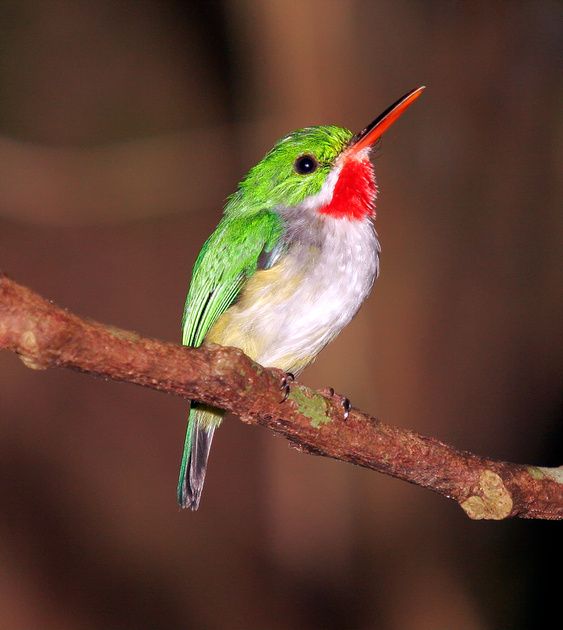- cross-posted to:
- earth@hexbear.net
- cross-posted to:
- earth@hexbear.net
The scarlet tanager (Piranga olivacea) is a medium-sized American songbird. Until recently, it was placed in the tanager family (Thraupidae), but it and other members of its genus are now classified as belonging to the cardinal family (Cardinalidae). The species’ plumage and vocalizations are similar to other members of the cardinal family, although the Piranga species lacks the thick conical bill (well suited to seed and insect eating) that many cardinals possess. The species resides in thick deciduous woodlands and suburbs. Scarlet Tanagers breed in mature deciduous forests and mixed deciduous-coniferous forests in eastern North America. They nest in oak, pine-oak, oak-hickory, beech, hemlock-hardwood, and occasionally pure eastern hemlock forests. In Canada they sometimes extend into boreal forests in stands of aspen, balsam poplar, and birch. Breeding Scarlet Tanagers prefer large forest tracts with large trees. During spring and fall they use similar forest habitats as well as open spaces such as parks and gardens. When they arrive in the southern United States coast in early spring they feed in shrubby vegetation, grassy fields, and on the ground. Scarlet Tanagers winter in mature forests and forest edges in northern and western South America, mostly on hills and mountains. They range south as far as the Bolivian lowlands. Scarlet Tanagers are strong fliers, making swift, direct flights and migrating long distances in fall and spring. Males arrive early on their breeding grounds to defend loose territories that include mating, nesting, and foraging areas. Territorial singing battles sometimes can escalate to confrontations, where one or both males spread and droop their wings and raise their tail in threat. If neither backs down, the standoff culminates in one male chasing another. Scarlet Tanagers are monogamous within each breeding season but switch mates from year to year. Parents feed their young for up to two weeks after the birds fledge, and then the family disperses before migrating. On wintering grounds Scarlet Tanagers join up with other species in foraging flocks. Scarlet Tanagers eat mainly insects along with some fruit and tender buds. Their invertebrate diet includes ants, sawflies, moths, butterflies, beetles, flies, cicadas, leafhoppers, spittlebugs, treehoppers, plant lice, scale insects, termites, grasshoppers, locusts, dragonflies, dobsonflies, snails, earthworms, and spiders. While searching for these tidbits they walk along branches high in the canopy or (rarely) along the ground, or vertically on tree trunks to probe the bark. Scarlet Tanagers perch or hover with fast wingbeats to grab insects from leaves, bark, and flowers, and they catch flying insects like bees, wasps, and hornets from the air. They swallow small larvae whole, but they kill larger prey by pressing it into a branch. In the winter, they forage in mixed-species flocks with woodcreepers, flycatchers, barbets, and tropical tanagers. Adult scarlet tanagers are eaten by birds of prey, including various owls. Eggs and nestling predators include blue jays, grackles, American crows, squirrels, chipmunks, and snakes. Scarlet tanagers mob most predators, diving and swooping around them while calling at them. The male Scarlet Tanager sings a burry series of 4–5 chirruping phrases with a hurried quality. Many people liken it to the sound of a robin with a sore throat. He sings from an exposed perch to defend his territory, getting into singing wars with his neighbors. Females sing a similar song but more softly and with fewer syllables. Mates often sing together while foraging or while the female is gathering nesting material. Both male and female Scarlet Tanagers give an energetic and very distinctive chick-burr. They also give a descending screech call when attacking intruders, a soft call that rises in pitch during courtship and nesting, a twittering call when feeding or flying together, and a nasal whistle when arriving at the nest with food. Here is a link so you can listen to this bird too.

